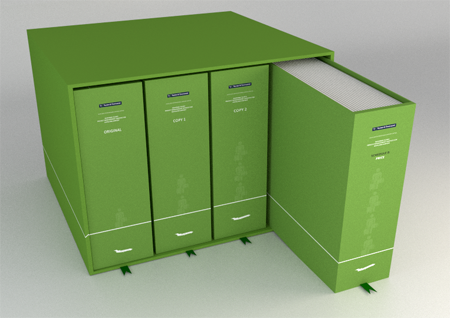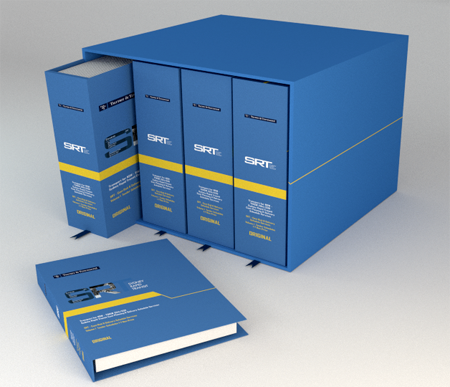Design & Layout: Four Steps Towards Print Perfection
Despite the rise of electronic tendering, high-value bids are still mostly paper affairs. How can you ensure your submission looks a million dollars?
KEY POINTS
- Ensure that printing is in your tender development project plan.
- Choose paper, art-board and treatments carefully so that they enhance your offer.
- Partner with a specialist designers and printers to achieve the best results possible.
The death of the paper tender has been greatly exaggerated
With apologies to Mark Twain, the death of the paper tender 'has been greatly exaggerated'. Whilst many procurement teams have indeed embraced the world of the eTender, most of the multi-volume bids at the 'top end of town' are still delivered to the tender box on good old wood pulp.
How can you ensure that your printed submission is as impressive as the content it contains?
1. Make printing part of your process
Please excuse an obvious truism: a human being is going to read your printed tender response. And subconsciously, human beings absorb far more than just words. Your prospect notices the quality and feel of the paper, the sharpness of printed text and graphics and tactile clues that indicate the care with which a document folder has been designed.
It's true that these elements will not win business on their own. However, when they support a persuasively-worded offer that is soundly focused on prospect need, a very clear message is communicated: "We really want your business".
On the flip side, if your printing strategy involves sending your finished content to the office laser printer's default tray of recycled 80gsm copy paper, you may end up communicating a very different message.
It may be tempting to leave printing to the 11th hour. But allocating time and resources for printing within your tender project plan will remove lots of headaches.
Be sure to include external printer engagement, print deadlines, allocation of any internal printing tasks and - most importantly - a 'Plan B'.
Making the print process a key process in your plan can make a huge difference to the physical document your prospect will hold in their hand.
2. Use an experienced graphic designer
However, using a skilled designer to develop the more tactile properties of your submission will often take your document package to a different level.
A skilled graphic designer can create:
- Bold cover designs that clearly identify the submission and highlight key win themes.
- Professionally designed boxes that will house the suite of folders
- Clamshells to accommodate spiral-bound documents such as pricing or project plans
- Tab pages to allow for easy navigation
Of course, a designer that specialises in tender design must be across a variety of disciplines. And they will be able to advise you on the importance of three dimensional packaging designs, contour cutting and the various specialist materials, stocks and treatments available.
3. Pick your stock carefully
If you have access to bright, high contrast paper, you may be able to print some of your content on your high-end office printer, especially if it will arrive late in the process and consists mostly of words.
However, for folders, section front covers, boxes, clamshells, tabs and dividers, it's likely that you'll want to choose your paper stock with more care, and in advance.
Attaining a highly professional finished product will mean leaning heavily on the advice of your designer who will be able to guide your decisions when it comes to the following:
- Paper weights: A submission may use a variety of weights: light glossy paper for covers and heavy art-board for tabs.
- Coated / uncoated: Should the surface of your page exhibit a glossy shine, or a dim, matte texture? Much will depend upon your business, the prospect and the bid.
- Burlap / Canvas / Vinyl: There is considerable choice in how boxes, folders and clamshells are finished. Burlap and canvas provide a classy, textured surface. Vinyl wraps can convey a sophisticated, modern look and feel.
- Embossing / Foil stamp: Foil-stamping and embossing can provide opportunities to add a subtle textural emphasis to design elements.

4. Partner with a specialised printer
Digital printing is highly competitive, and there is no shortage of suppliers eager to quote for your tender print job. Our experience, however, is that the best results come from those that specialise in this kind of work.
Printing a tender often involves a large number of elements, a variety of media and multiple tasks occurring at specific times. Selecting a specialist tender print shop can remove much of the guesswork and anxiety from this complex process.
Additionally, tender specialists offer a range of special treatments that high-volume printers lack: items such as foil-stamping, metallic inks, custom contour cutting etc.
Finally, tender print specialists are very comfortable with aggressive deadlines, last-minute changes and the importance of delivering absolute print perfection.
For most tenderers, spending a little more to remove this kind of headache and anxiety is a wise investment.
Multi-volume tender submissions are worth a lot of money. So why shouldn't the end result look a million dollars? If print design is part of your tendering strategy, specialist design and print experts will ensure that your submission sends out all the right messages.
 Matt Milgrom is a senior consultant with Tender Success. His specialist graphic design knowledge has been applied to a number of high worth bids. Contact Matt to ensure your next response is a success.
Matt Milgrom is a senior consultant with Tender Success. His specialist graphic design knowledge has been applied to a number of high worth bids. Contact Matt to ensure your next response is a success.




